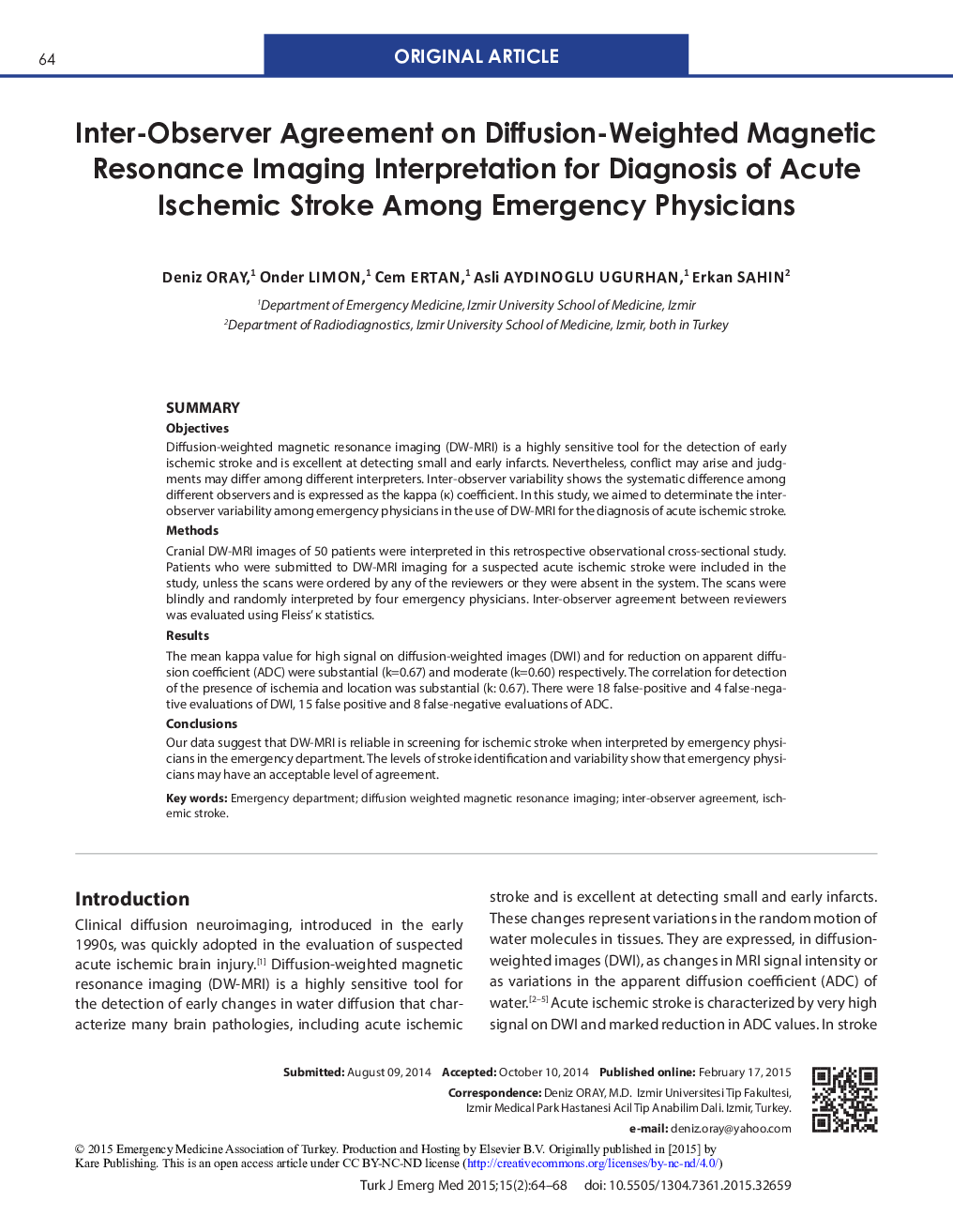| Article ID | Journal | Published Year | Pages | File Type |
|---|---|---|---|---|
| 2604056 | Turkish Journal of Emergency Medicine | 2015 | 5 Pages |
SUMMARYObjectivesDiffusion-weighted magnetic resonance imaging (DW-MRI) is a highly sensitive tool for the detection of early ischemic stroke and is excellent at detecting small and early infarcts. Nevertheless, conflict may arise and judgments may differ among different interpreters. Inter-observer variability shows the systematic difference among different observers and is expressed as the kappa (Κ) coefficient. In this study, we aimed to determinate the inter-observer variability among emergency physicians in the use of DW-MRI for the diagnosis of acute ischemic stroke.MethodsCranial DW-MRI images of 50 patients were interpreted in this retrospective observational cross-sectional study. Patients who were submitted to DW-MRI imaging for a suspected acute ischemic stroke were included in the study, unless the scans were ordered by any of the reviewers or they were absent in the system. The scans were blindly and randomly interpreted by four emergency physicians. Inter-observer agreement between reviewers was evaluated using Fleiss’ Κ statistics.ResultsThe mean kappa value for high signal on diffusion-weighted images (DWI) and for reduction on apparent diffusion coefficient (ADC) were substantial (k=0.67) and moderate (k=0.60) respectively. The correlation for detection of the presence of ischemia and location was substantial (k: 0.67). There were 18 false-positive and 4 false-negative evaluations of DWI, 15 false positive and 8 false-negative evaluations of ADC.ConclusionsOur data suggest that DW-MRI is reliable in screening for ischemic stroke when interpreted by emergency physicians in the emergency department. The levels of stroke identification and variability show that emergency physicians may have an acceptable level of agreement.
